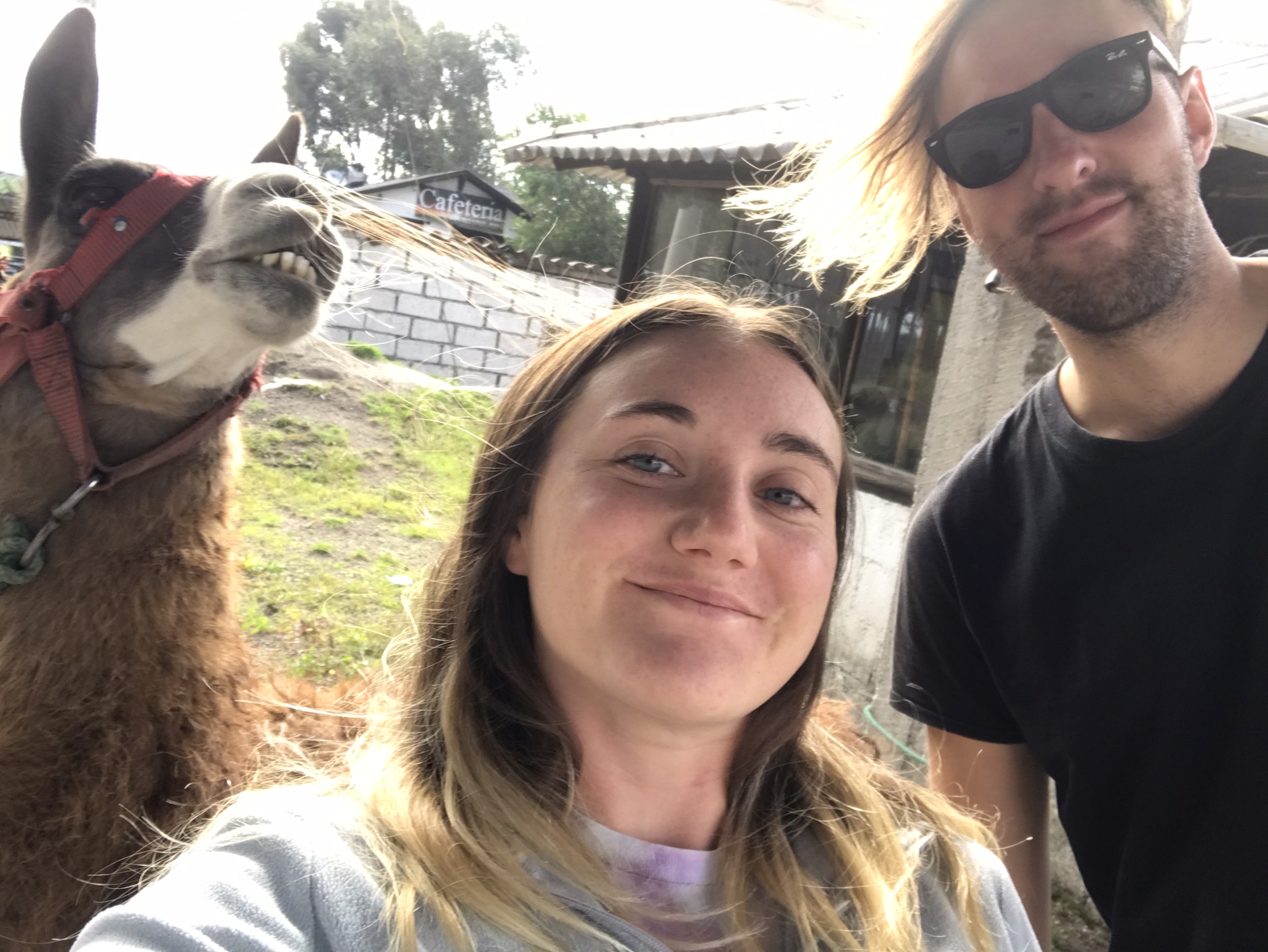Are you planning a trip to the Balkans and wondering what all the fuss is about? Read on to find out about all things Balkan from cultural similarities to shared history and cuisine, we’ve got it all here!
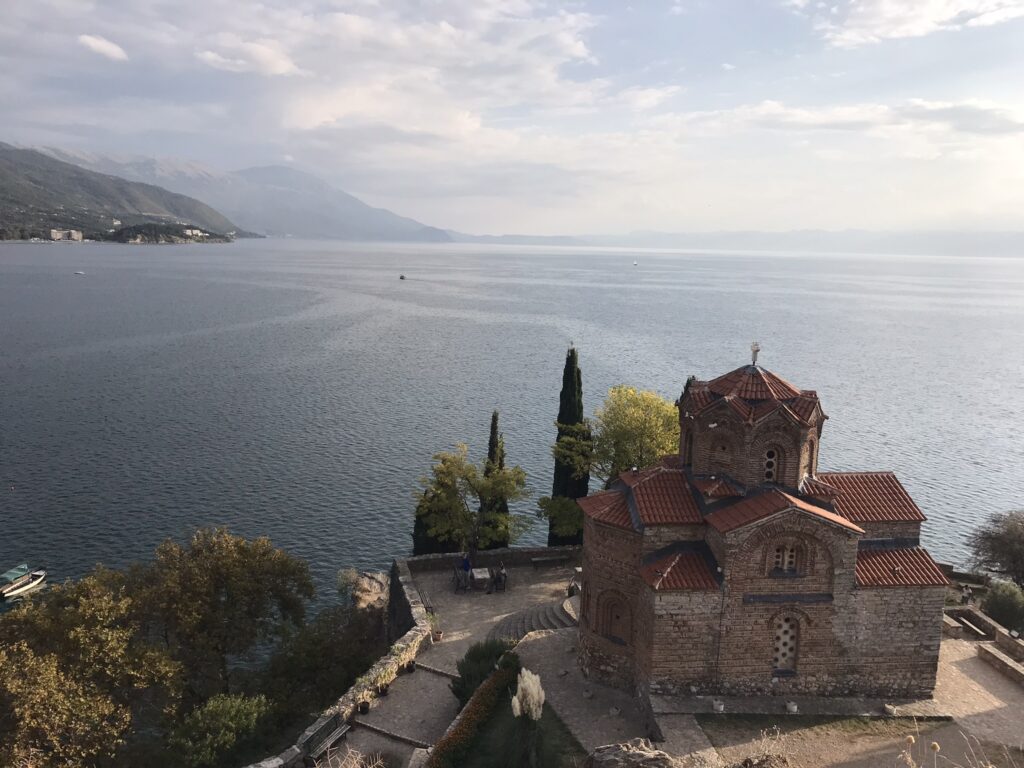
St John the Theologian Church overlooking the shores of Lake Ohrid, North Macedonia
So you ask, what exactly is the Balkans and where is it?
Well, the Balkans are a collection of countries situated on the Balkan peninsula in Eastern Europe, namely Albania, Bosnia and Herzegovina, Bulgaria, Croatia, Kosovo, Montenegro, North Macedonia, Romania, and Serbia. The Balkans are still relatively warm in October (around 20 degrees celsius minimum in most places), so autumn is a great time to visit as you can avoid the summer crowds and high temperatures.
Most if not all the countries in the Balkans share a common history: most Balkan nations claim descent from ancient tribes such as the Thracians (Bulgaria) and Illyrians (Albania, Kosovo, Montenegro, Croatia and Bosnia and Herzegovina). Most of the Balkan territories were conquered by the Romans and became Roman provinces (i.e. Dalmatia & Dacia), which then morphed into the Byzantine empire bringing Christianity to the region. The Balkans was affected by the mass migration of Bulgars and Slavs who arrived in the 6th century and dominated the region; these peoples brought their own Slavic languages in stark contrast to the Latin/Greek language which was used at the time of the Romans. Then came the Ottoman occupation (roughly 400 years from 15th century- 20th century), bringing Islam to many parts of the region, and finally the absorption of many of the Balkan countries into Yugoslavia (1945-1992).
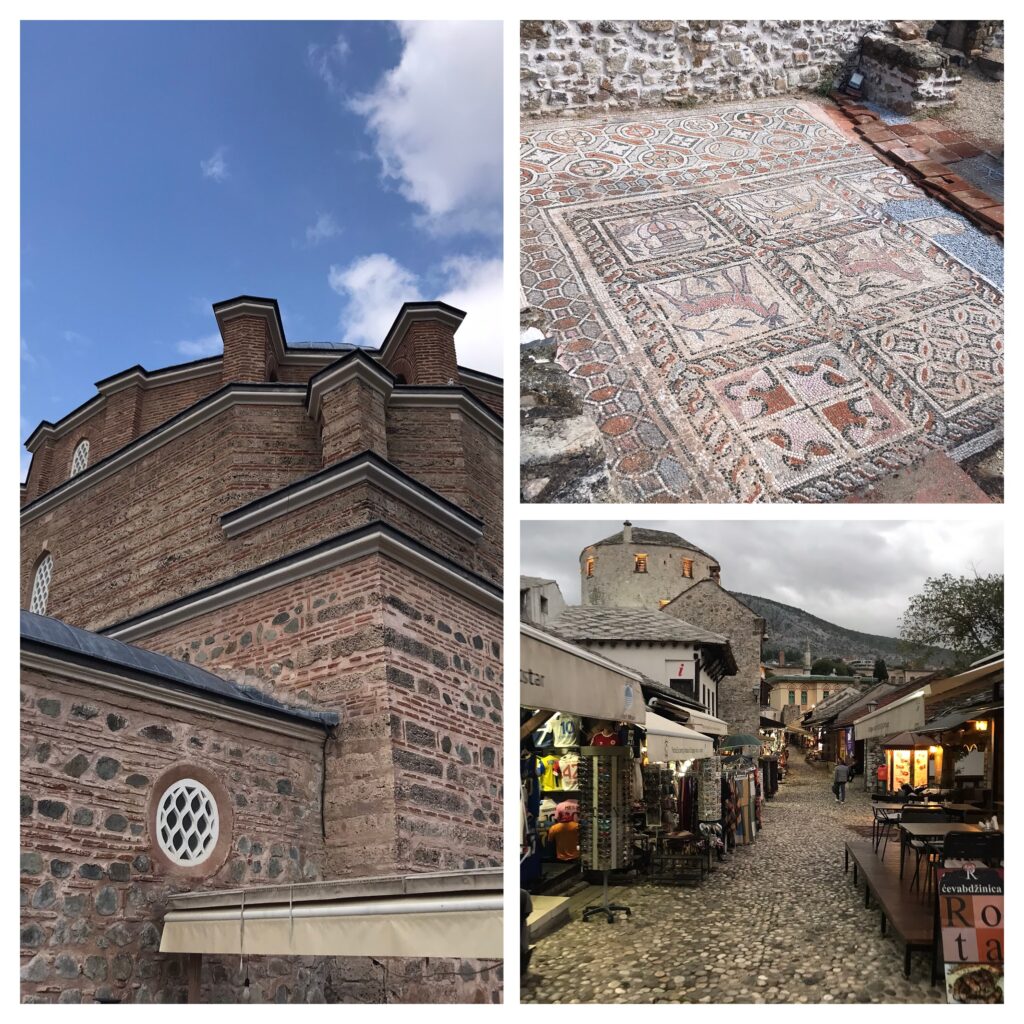
Banya Bashi Mosque (Sofia), Roman mosaics at Heraclea Lyncestis, North Macedonia & Ottoman Bazaar area in Mostar
Yugoslavia (meaning Land of the South Slavs), was a communist state led by Josip Broz Tito from 1945 until his death in 1980, consisting of the modern nations of Serbia, Montenegro, Croatia, Kosovo, Bosnia & Herzegovina and Slovenia. Tito modeled the new Socialist Federal Republic of Yugoslavia (SFRY) after the Soviet Union however he eventually split with Stalin’s USSR, and communism in Yugoslavia would take on its own unique form. Communism in Yugoslavia is known as being less hard-line than the Stalin model, they also maintained relations with the West unlike many other communist countries. Some positive outcomes of the SFRY include social stability, the possibility to travel freely, the level of education and the welfare system. People in the Balkans still have mixed feelings about Yugoslavia and Tito, some still view Tito as the saviour of the nation whilst others remember him as an authoritarian dictator. It’s impressive that Tito managed to hold together so many diverse countries that didn’t necessarily speak the same language. We learned he achieved this by fostering a spirit of brotherhood and unity within Yugoslavia. Bulgaria and Albania, which weren’t part of Yugoslavia, had their own communist regimes. Albania in particular had one of the most oppressive regimes in the world, the nation sealed off its borders and went completely dark in international relations.
The great migration of the Slavs to the Balkans region brought a new language to the land. Most of the languages now spoken in the Balkans, with the exception of Albania, are considered Slavic languages. Most countries use the Cyrillic alphabet (again Albania is the anomaly to this), which for those of us who are used to the Latin script looks very strange and very Russian. When traveling around the Balkans it’s important to note that you will encounter a lot of Cyrillic, don’t be put off by this, most restaurants and tourist hotspots will have the name of the establishment in the Latin script too (and most likely in English for tourists). We’ve been told it’s possible for many Slavic speakers to understand each other as they share a common root language i.e. North Macedonians are able to understand some Croatian. How interesting!
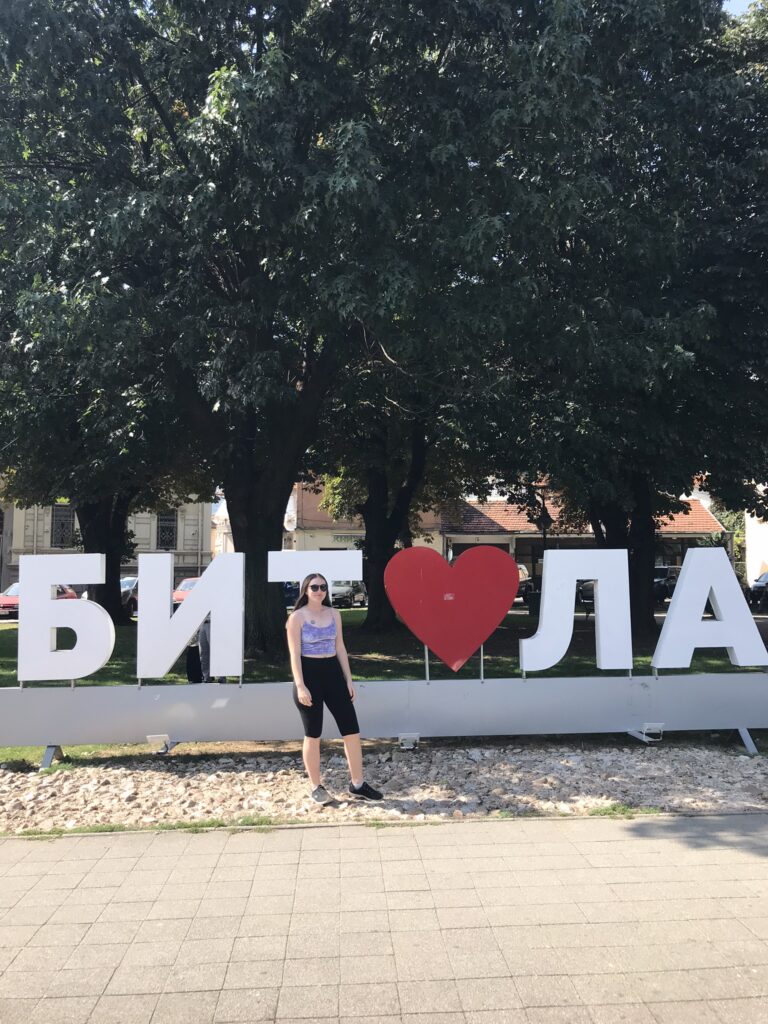
The Bitola sign is written in Cyrillic, North Macedonia
The Balkans inherited a lot of their cuisine from the Ottoman empire. In most Balkan countries you will find similar dishes but with slightly different names, such as burek (filo pastry pie) called banitsa in Bulgaria and byrek in Albania, sarma (rolled cabbage leaves stuffed with meat) and cevapi (grilled meat in a sausage-shape served with bread). Ajvar is also extremely popular amongst the Balkan countries with families producing their own special recipe of roasted peppers and aubergine to make the sauce. A more modern Balkan classic is the shopska salad, consisting of tomatoes, cucumbers, onions, peppers covered in copious amounts of grated mild, creamy cheese. Prepare your body for a whole lot of meat, cheese and bread in the Balkans. If this is up your street, like me, welcome to paradise! If, on the other hand, you’re a veggie or vegan, you might have to tread more carefully to find places that cater to the non-meat eating crowd.
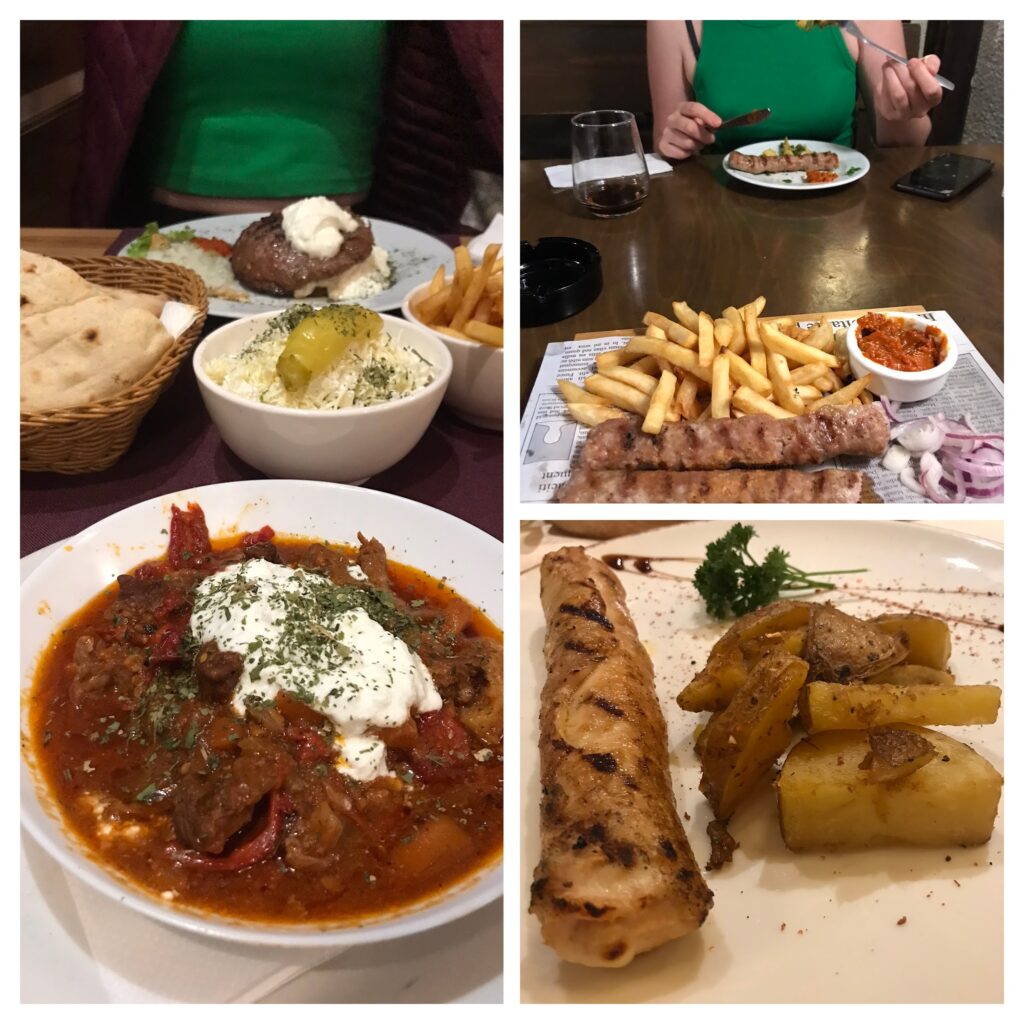
A good slogan for food in the Balkans is ‘Heavy on the meat, light on the greens’
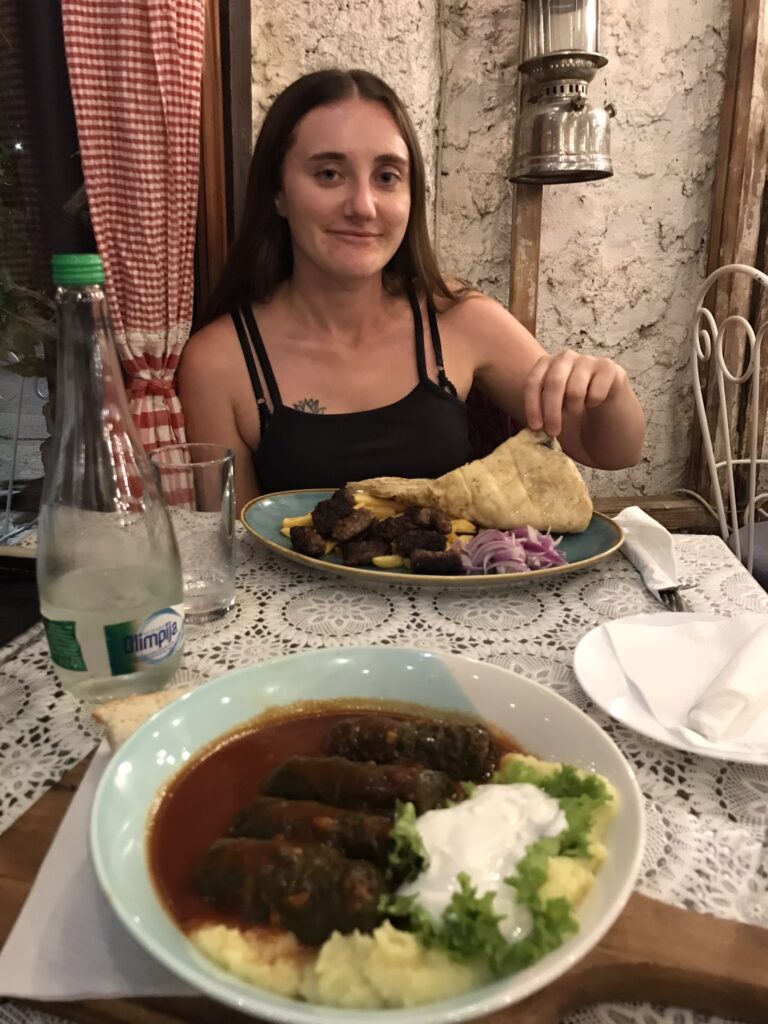
Two of our Balkan favourites: cevapi and sarma
The most popular drink by far in the Balkans region is the spirit rakia, a fruit brandy, spelt rakija in Bosnia and Herzegovina and rakiya in Bulgaria. It’s likely that rakia will be on the drinks menu in every restaurant or bar you visit. Another beverage introduced by the Ottomans which was quickly adopted as a national drink and pastime was coffee; all across the Balkans from Pristina in Kosovo to Sarajevo in Bosnia you’ll find locals sipping coffee from tiny copper cups, whiling away the hours, chatting to their friends or family over a coffee at any time of the day, be it 10am or 10pm. Coffee drinking doesn’t have a cut off time here. I’m not sure how they sleep after drinking coffee at night!
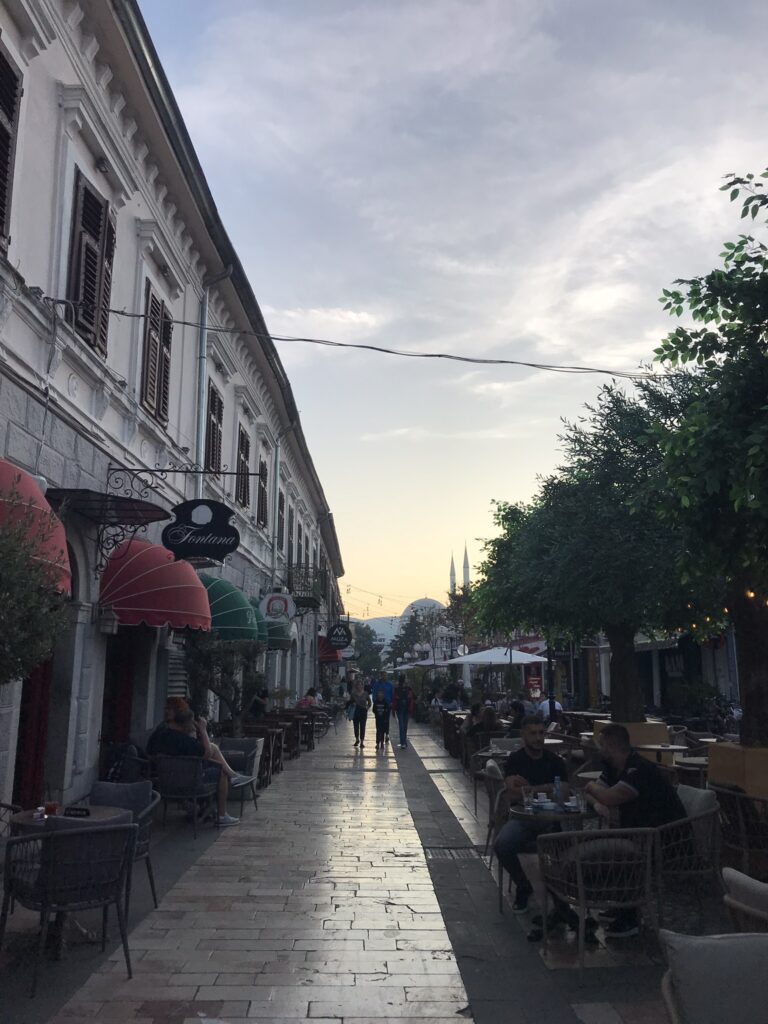
Locals catching the last rays of the setting sun and enjoying coffee alfresco in Shkoder, Albania
Religion in the Balkans region is a mixed bag. There are three main religions that co-exist peacefully (or in the case of Bosnia and Herzegovina, not so much): the Orthodox church, the Catholic church (less popular than Orthodox church) and Islam (most popular in Kosovo, Bosnia and Herzegovina and Albania where it is the majority religion). Orthodox churches are interesting in that there are no pews in the church, congregants usually stand for the entire duration of services. The layout of the church is different from Western churches too in that there’s a rood screen (iconostasis), often beautifully decorated with paintings of icons and religious imagery in Byzantine-style, separating the nave from the sanctuary in a church. This separates and conceals the priest from the congregation. In addition to this, there’s usually a big throne for the patriarch of the church (head of the orthodox church in the country) – in the Alexander Nevsky church in Sofia there was an additional seat for the king.
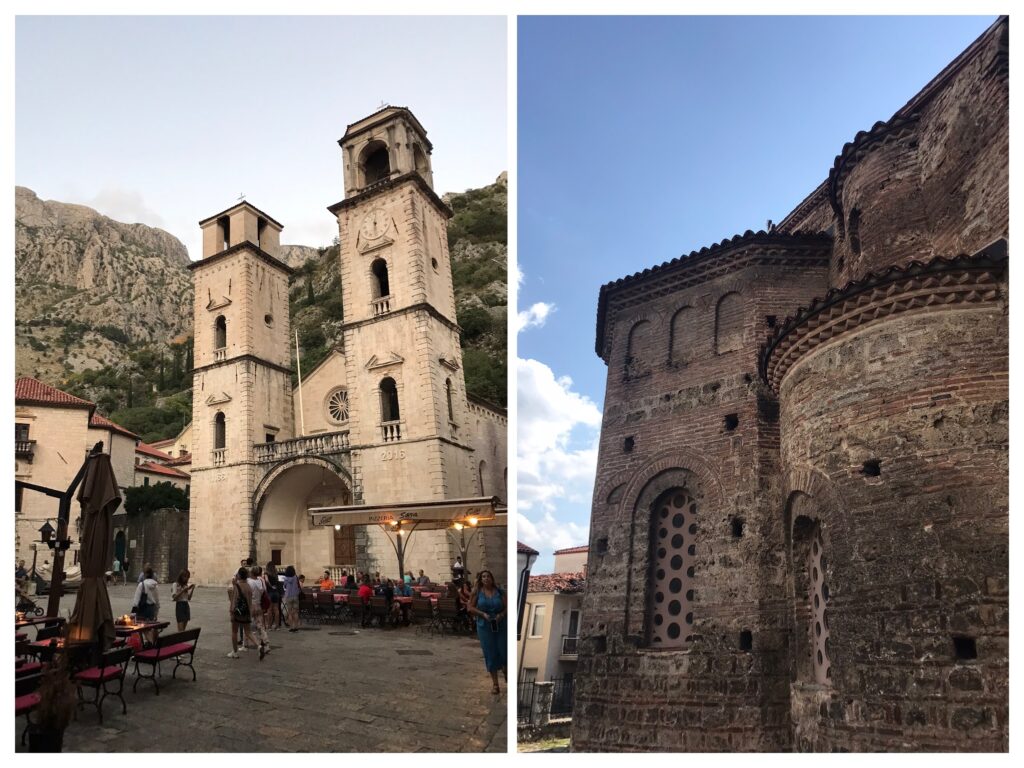
Catholic St. Tryphon’s Cathedral (Kotor, Montenegro) and St Sophia Orthodox Church (Lake Ohrid, North Macedonia)
